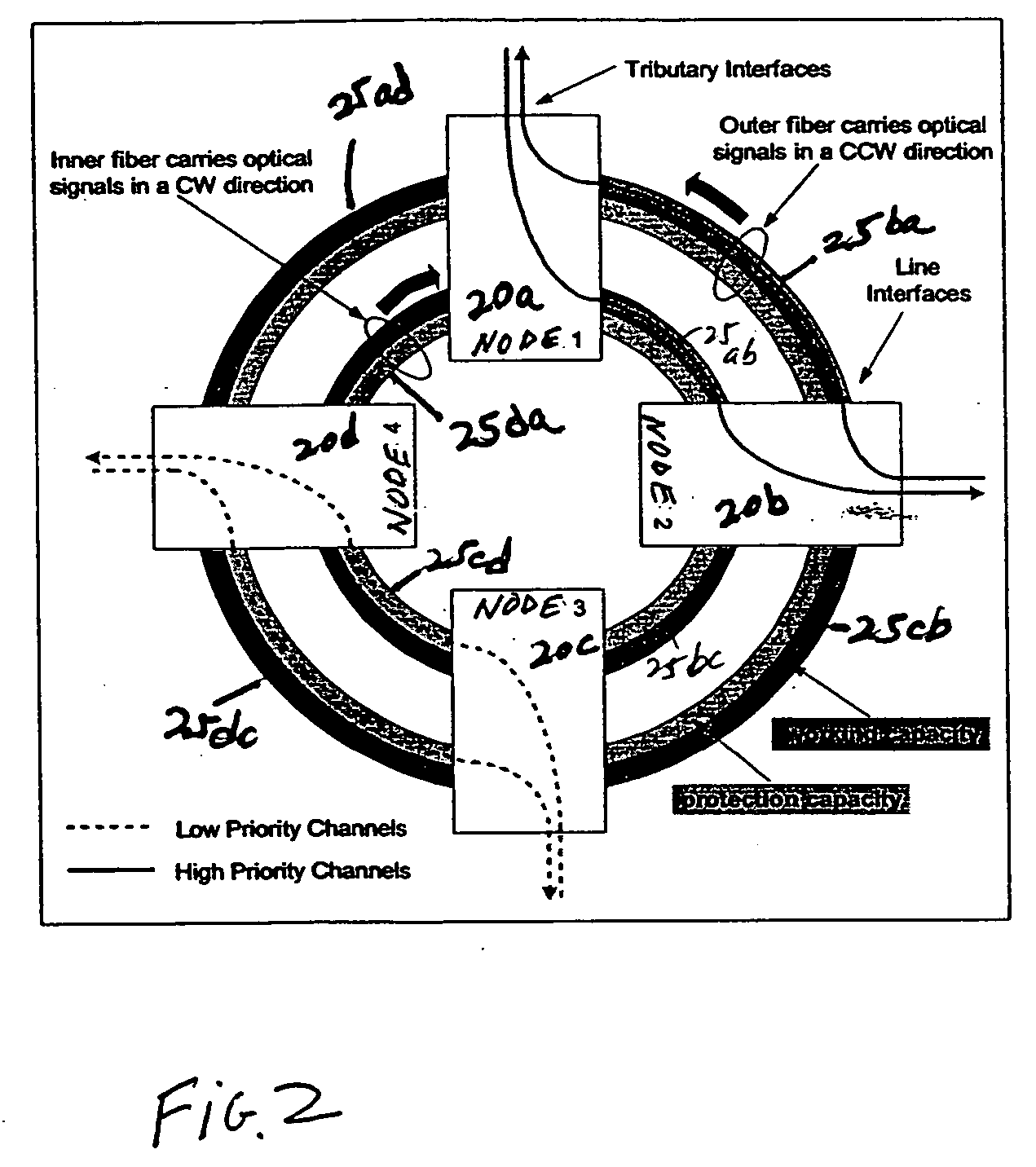Wavelength and filter arrangement for WDM networks
a filter arrangement and wavelength management technology, applied in the field of fiber optic communication, can solve problems such as inability to be usefully retrieved, and achieve the effect of efficient wavelength management and filtering
- Summary
- Abstract
- Description
- Claims
- Application Information
AI Technical Summary
Benefits of technology
Problems solved by technology
Method used
Image
Examples
Embodiment Construction
[0021] Referring to FIG. 1, there is shown a two-fiber optical bi-directional line switched ring (O-BLSR) 10. Ring 10 includes a plurality of nodes 20 which are interconnected by fibers 25. Each node can send and receive signals to and from adjacent nodes on ring 10. The nodes are designated 20a, 20b, 20c etc. In addition, terminal equipment, such as IP, ATM and SONET equipment, can be connected to a node to send and receive traffic from ring 10.
[0022] Each pair of adjacent nodes is connected by two fibers. Each fiber 25 carries a number of wavelength channels, including a number of data payload channels and an optical service channel (OSC). The data payload channels are bit-rate and protocol independent thus allowing the transport of various types of traffic such as IP, ATM and / or SONET traffic. The OSC is used for node-to-node communication to facilitate various network operations ranging from protection switching to customized configuration.
[0023] The nomenclature regarding fib...
PUM
| Property | Measurement | Unit |
|---|---|---|
| wavelength | aaaaa | aaaaa |
| wavelength bands | aaaaa | aaaaa |
| wavelength band | aaaaa | aaaaa |
Abstract
Description
Claims
Application Information
 Login to View More
Login to View More - R&D
- Intellectual Property
- Life Sciences
- Materials
- Tech Scout
- Unparalleled Data Quality
- Higher Quality Content
- 60% Fewer Hallucinations
Browse by: Latest US Patents, China's latest patents, Technical Efficacy Thesaurus, Application Domain, Technology Topic, Popular Technical Reports.
© 2025 PatSnap. All rights reserved.Legal|Privacy policy|Modern Slavery Act Transparency Statement|Sitemap|About US| Contact US: help@patsnap.com



